The other day I was on the hunt for colored elastic; WIDE colored elastic. It’s easy to find white and black in fabric shops, but no one seems to carry the colored variety! I guess most people aren’t using exposed elastic on their projects. But if you’re into making Circle Skirts, a little variety would be great!
A friend tipped me off to this ebay shop that sells webbing (which is similar but feels more like 80s wrist bands; more for athletic clothing). I just wasn’t content. So, duh….why not dye it!
And that’s just what I did.
(Update: check out the end of this post for a new VIDEO tutorial for dyeing fabrics!)
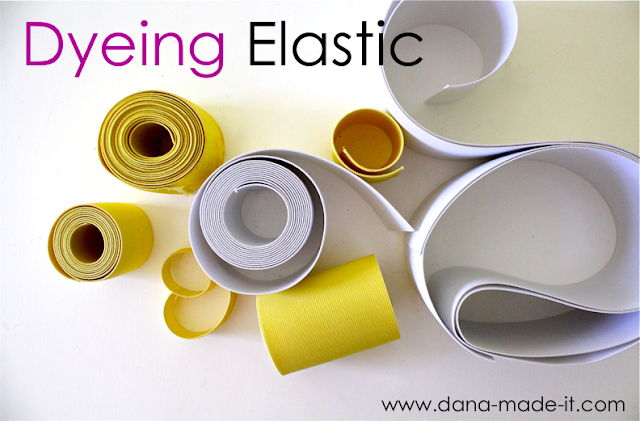 For additional tips on dyeing fabric, please read through my other tutorial first:
For additional tips on dyeing fabric, please read through my other tutorial first:
 The process here is very simple.
The process here is very simple.
You need: elastic, dye, water, a bowl and spoon, and gloves. That’s it!
A quick note about elastic:
Most elastics found in fabric shops are about 80% polyester, 20% rubber. You’ll find some that are a cotton/rubber blend and actually absorb the dye better than polyester elastic. However, I’ve only seen cotton elastic in 1/4 inch or 1/2 inch wide. If anyone has a source for WIDE cotton elastic, please leave a link in the comments!
 Okay, let’s get started.
Okay, let’s get started.
Grab your dye.
I used this Lemon Yellow RIT powder dye. It worked fine/great. But moving forward I think I’ll stick with the liquid variety. Liquid costs twice as much but it mixes better with the water and ensures a more even dye bath. If the powder isn’t dissolved entirely into the water (like mixing koolaid) you may end up with a spot here or there of concentrated dye on your fabric or elastic.
 Grab a large bowl and spoon (I have a designated set that I always use for dyeing).
Grab a large bowl and spoon (I have a designated set that I always use for dyeing).
Fill it with the hottest water you can get from your tap. You don’t need to boil the water; just use what comes out of your pipes.
Mix in the dye, till it’s completely dissolved and mixed well:
 Then throw in your elastic (or other items). Don’t overcrowd the bowl or your items won’t get an even dye. But don’t waste the chance to turn plain white into lemon yellow! If you have an extra baby onesie or a white T-shirt, throw them in too! Make the most of your dyeing efforts.
Then throw in your elastic (or other items). Don’t overcrowd the bowl or your items won’t get an even dye. But don’t waste the chance to turn plain white into lemon yellow! If you have an extra baby onesie or a white T-shirt, throw them in too! Make the most of your dyeing efforts.
 With gloves on, stir, squish, and move the elastic around in the dye. Do this for a few minutes and then you can walk away for a bit. Every 5-10 minutes come back and stir, squish, and move the elastic around. Leave the elastic in for as short or as long as you like. The finished product will typically look lighter than it does in the dye bath, so keep that in mind.
With gloves on, stir, squish, and move the elastic around in the dye. Do this for a few minutes and then you can walk away for a bit. Every 5-10 minutes come back and stir, squish, and move the elastic around. Leave the elastic in for as short or as long as you like. The finished product will typically look lighter than it does in the dye bath, so keep that in mind.
I left these elastics in for 1 hour.
 When you’re at the desired color, dump out the water.
When you’re at the desired color, dump out the water.
 And rinse it a few times.
And rinse it a few times.
 Beautiful yellow! Now throw it in the washing machine and run a normal cycle, then dry it in the dryer (or air dry). The only downside to the project is that it uses a fair amount of water. So I usually find ways to cut back on my other water consumption for the day to balance it out.
Beautiful yellow! Now throw it in the washing machine and run a normal cycle, then dry it in the dryer (or air dry). The only downside to the project is that it uses a fair amount of water. So I usually find ways to cut back on my other water consumption for the day to balance it out.
 And…..you have colored elastic!
And…..you have colored elastic!
 Here’s a sample of elastics from the RIT dye bath. All were left in for 1 hour. The cotton elastic on the far right dyed best. But I was very pleased with the Polyester elastic and will definitely be trying this again with other colors:
Here’s a sample of elastics from the RIT dye bath. All were left in for 1 hour. The cotton elastic on the far right dyed best. But I was very pleased with the Polyester elastic and will definitely be trying this again with other colors:
 Elastic dyeing couldn’t be easier!
Elastic dyeing couldn’t be easier!
Of course, different dyes may give you different results (which is why I recommend trying a few brands out and also why I stick with the above method for dyeing). I decided to branch out and tried a new dye called iDye Poly, specifically recommended for dyeing Polyester. But the process went poorly.
 It involved powdered dye, a liquid color intensifier, and boiling on the stove.
It involved powdered dye, a liquid color intensifier, and boiling on the stove.
 I followed the instructions,
I followed the instructions,
 But I never felt like the powder was completely dissolved.
But I never felt like the powder was completely dissolved.
 And when I put the elastic in, it turned out like this, with big splotches of dye everywhere:
And when I put the elastic in, it turned out like this, with big splotches of dye everywhere:
 It wasn’t messy enough to actually look cool or intentional. But I washed it up anyway and I’ll use it for other projects that have hidden elastic in a casing:
It wasn’t messy enough to actually look cool or intentional. But I washed it up anyway and I’ll use it for other projects that have hidden elastic in a casing:
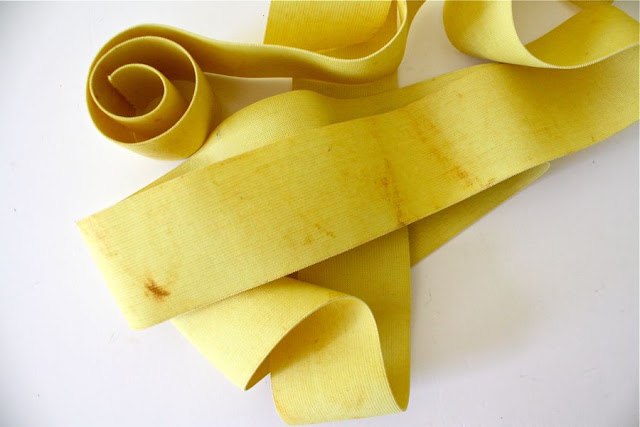 It may have been my own errors using the dye; perhaps other people have had better results. But for now, I’ll stick with my hot water/bowl method above.
It may have been my own errors using the dye; perhaps other people have had better results. But for now, I’ll stick with my hot water/bowl method above.
Well, the only remaining question is…..what should you do with your lovely dyed elastic???
Make a Circle Skirt of course!

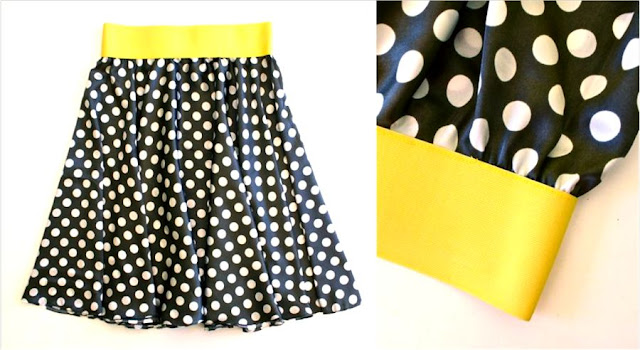
You’ll find the complete Tutorial for women and girls HERE.
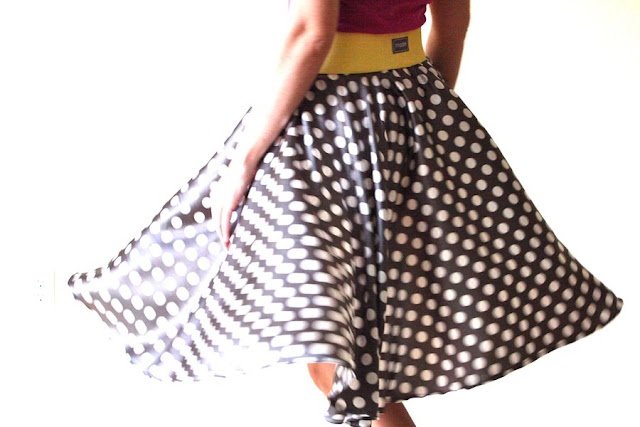
Click the play button below to see fabric dyeing in action!
If you’re new around here, MADE EVERYDAY with Dana is a fresh and fun sewing show, where we create everyday items you will love and use.
To watch other episodes:
• Click to the VIDEO page OR
• Subscribe to my Youtube channel so you’re updated as soon as the episode goes live.
















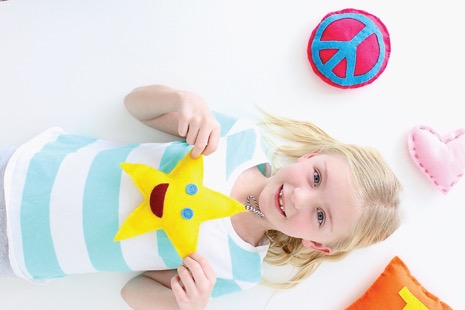


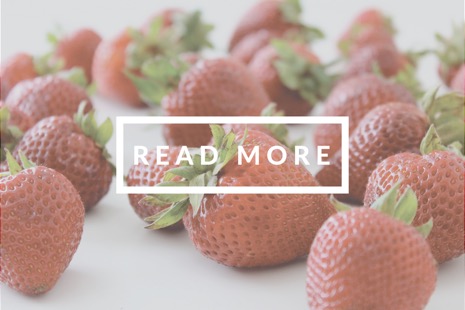
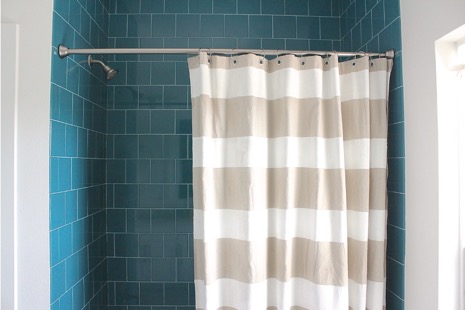






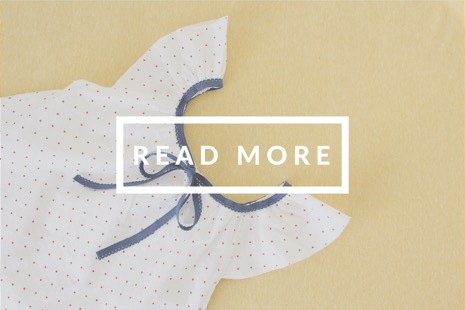


Thank you for sharing this information. I was trying to find 2″ wide colored elastic to make my girls a skirt and came across your site. I will be using it a lot in the future!!
Craft warehouse carries really nice 2” colored elastics, some even are polka dots.
It looks like I just found some cotton elastic in 4 and 6 inch!
http://www.designeralleyfabrics.com/CartGenie/prod-157.htm
Here is some really cute wide elastic on ETSY!!!! They have stripes! 🙂
oops, here is the link: http://www.etsy.com/shop/acafterglow?section_id=5326517
Great site. I had given up. Had only managed to source black. Thank you!!!
Thanks for the fantastic tutorial. The photographs were really clear and very helpful. Is it possible to save (and reuse) the dye that you tipped out once you finished dying your elastic?
Kim
Hmmm, you could probably do that. You might need to warm up the water again though…maybe on the stove.
Glad it worked out well for you!
Most dye needs to be activated, in order to work, (usually by soda ash.) Rit dye (and most all in one dyes) are self activating, which means they only have a window in which they work most effectively, before the activation wears off (the process starts as soon as the dye goes in the water) so saving and reusing dye doesn’t really work well. It may stain the fabric, but it won’t dye and molecularly bond to the fabric when it’s old dye.
Hey Dana,
Love your site and your tutorials are amazing! I was wondering, can you share where you get your elastic from? I’m having a hard time finding large amounts of it, I’ve been making skirts for myself and my teammates for rollerderby but the elastic is costing me a fortune!
Thanks,
Amanda
I’ve mostly purchased it at Joanns. You can buy it online from their site too. Or try etsy or ebay. Hope that helps!
Thank you for your vivid photos of the process. I too just recently had an epiphany about “hey, why don’t I just dye the elastic I need in the colors I want…duhh.” I used the liquid Rit, I got the dark brown. So, I omitted the hot water (was that wrong?), I poured the entire bottle of dark brown liquid dye into a plastic bowl and added 1/4 cup of salt. Then I put in my 3 strips of 1/2″ white braided elastic into the bowl and sealed it overnight on the counter. The reason I didn’t dilute with water is because I thought I might get a darker more richer brown, which is exactly what I need.
Next day, I pick the elastic out of the dye and proceed to rinse them in the sink, to my everlasting dismay, the color was like a beige, I’ve bought flesh tone elastic at craft stores that were more dark!
What happened, was it me?
My next grand idea, use fabric markers/paint. The paint isn’t working too well (turns the elastic into plastic), the fabric markers…expensive!
What should I do?
NeoMe – you could try coloring it with a sharpie. I’ve done that on projects that I only needed a small amount of elastic so it didn’t take very long and once the marker dries it doesn’t rub off.
I’ve only used the liquid dye once before and I added the hot water like it calls for on the bottle and had wonderful results. Maybe worth trying again with the water added. I’ve also heard that using boiling water can speed up the dying process.
RIT is not meant to dye synthetic fabrics, so if your elastic was polyester, that would be the reason you didn’t get a strong color. Some colors may dye a deeper color than others (I’m actually surprised the yellow took as well as it did for Dana), but notice even for the yellow the cotton dyed a deeper color than the synthetic. If you want deep colors with dye, you’ll need to use a cotton blend elastic.
Also for everyone here, realize that using RIT for synthetics, or Sharpies for anything, may not be very colorfast. It may wash out over time and eventually may even go back to white. For the best colorfastness, use a cotton blend elastic and a fiber-reactive dye (rather than RIT).
beautiful i didnt get my hands in dying elastic but look foreward to the near ,near near,near,neeeaaaarrrr(wait almost there;)}rrrrrr- future LOL but i just did a little twist with mine ! it can be seen on my blog on the little girl skirts I think you’ll find them. beautiful also 😉
What brand of elastic did you use for this? I just want to make sure I buy the right thing. I’m still a bit of a novice, but I love this skirt and want to make several for my 2 year old!
I used 2 inch knit or braid elastic from Joanns. You can usually buy in their online store as well.
I’ve been having trouble getting the elastic to take the dye. It would be great if I wanted only pastel elastic but how do you get bright colors? I tried leaving it for hours and it’s still a muted color..
It’s hard to get bright colors since most elastic is polyester based and most store-bought dyes work better with cotton than polyester. I’ve only had luck with pastels as well. But Joanns just started carrying bright elastic colors in their stores! It only comes 1-inch wide. But they have hot pink, gray, purple, turquoise, brown, and some other colors!
For everyone reading this: please only use containers and pots that YOU DO NOT EAT OUT OF, to dye your fabrics. I saw the picture of the pot on the stove and was a bit worried about there not being any warning. I do not have a dye specific vat at home, so I soak my dye in hot water in the washing machine with some salt before sending it through the cycle.
thanks for the tip! I will be using it ! 😉
Does the elastic fade on the skirt when you launder it?
the first art shop i went to only had liquid RIT in kelly green and i was searching for bright yellow…however, they had iDye in every single color imaginable, so I decided to ignore your advice and go for the iDye allowing extra time for the powder to dissolve. Big mistake. Horrible streaking just like you described, but the yellow color I got was amazingly rich. Went to a different store to get the yellow liquid RIT which came out this super pale yellow, which was pretty, but not at all what I was looking for! Finally was able to located Dylon and switched to Flamingo Pink, which gave me the saturated hue I was looking for…
Really frustrating about the iDye, especially since a lot of the stores here in SF are switching over to carrying just that as opposed to the liquid dye…pretty sure it has to do with the sexy packaging. Oh well. Now I know 🙂
You might want to check out http://www.atlantathread.com for elastic. I’m not sure if they will carry cotton 3 inch elastic but it is where I get most of my sewing accessories at a economical price.
Thank you! I’m putting together a new packaging for my jewelry store and it involves elastic. I was bummed when I discovered that it only comes in black and white and would like to dye it a little more off-white/cream. I found your tutorial very helpful (and beautiful to look at!) I’m thinking I’ll do a tea mixture to get the off-white, natural color I want. Do you have any tips for dying in tea? Also, do you think that dying the elastic will create the possibility that the dye will rub off onto my boxes? How to I make sure the color is not going to bleed? Thanks!!! 🙂 Sarah Jane
I’m looking to dye elastic for some suspenders I will be making for my son. Your tutorial was very helpful, thank you.
I am seriously kicking myself…why didn’t I think of this! I really did have a DUH moment when I saw this post. Few weeks ago I ordered wide coloured elastic from the USA and paid insane shipping fees and I still don’t have it. This would have been much easier! DUH! Thanks for the tip..I will be trying this!
Hi Ashely, just wanted to add some of my tips for dyeing with iDye. First of all I don’t break open the bag, I dissolve the bag in a small container of hot-HOT water… I wait until it’s completely dissolved until I add it to the dye bath. At first the bag with the dye in it is kind of goopy then with stirring it is better.
I’m also super lazy and now use a portable washing machine to dye clothes. Here’s my tute for that http://www.westmamadesigns.org/2012/10/29/tutorial-hand-dyeing-clothes-using-a-portable-washing-machine/
Hi, love the project. I bought the liquid dye and the 2″ elastic for my twin daughters skirts. I did not see anywhere that you added vinegar or salt. Did you only use hot water? Thanks!
I dyed my 3″ elastic today. Everything had been assembled for a week but I was nervous about actually doing it. It was easy and looks so good with my skirt fabric. White elastic would definitely NOT have looked good. I’m so excited!
Any suggestions on how to dye the elastic dark black? I left mine in Rit black dye for 1 1/2 hours and it wouldn’t get darker than what resembles a navy blue color.
When I dying cloth, lace and small items, I use an old juice jug that has a wide cap. Once all my items are in, I only have to shake it once in while to keep it stirred. Works great!
Here is where I found 3″ wide white cotton elastic.
http://www.staples.com/Matrix-Non-sterile-Elastic-Bandages-White-5-yds-L-x-3-inch/product_111108
I think these are more like ace bandages. I suspect they would lose their elasticity quickly and would not be heavy-duty enough for most applications where you would be using wide elastic. They may work in place of ribbing, like at the bottom of long sleeves, but i don’t think they would have much memory and again would get stretched out quickly.
Hi! I love your tutorials. This one was really great and straightforward–I’ve already dyed two big pieces of elastic with it! 🙂
Just wondering, how does the color hold up after repeated washes? So far I’ve only washed my elastic the once after dying it (haven’t sewed anything yet), but I’m wondering if I should plan on hand-washing any clothes I make with it to avoid having the color fade.
Have you ever dyed elastic brown? I am trying to make a maxi skirt with the exposed elastic and I am having trouble. I go the rit dye in dark brown and it comes out purple gray. Haven’t tried the regular brown. Any help would be great. Thank you
Abbie
I haven’t tried brown….but all colors are going to turn out lighter than you would expect b/c the elastic is mostly polyester and doesn’t die as well as cotton. Sorry about that 🙁
Yes, I have been looking for elastic in other colors for for other projects and this solves my problem! Thanks so much for all of your trials and tribulations finding how dyeing elastic works! I am going to do! Demetria
I have not tried it, but Dharma trading has a dye that they say works with most nylon products, so it should work with polyester. Their regular dyes are listed as working on most fabrics – I used their regular dye to dye a t-shirt burgundy, and it has held its colour really well. Their shipping rates are very reasonable.
Their website:
http://www.dharmatrading.com
Nylon does not take dye like other synthetics – it works with animal-fiber dyes unlike other synthetics. Synthetics are far more variable with dye uptake than natural fibers, and it’s best to use a dye that mentions the specific fiber you’re working with. Although a nylon dye might work for other synthetics, I would not assume so.
Thank you so much for your post! I am making a crop top and midi skirt set and I needed a peach colored elastic to compliment the set. I am trying this method tonight. (cross fingers) Wish me luck! 🙂
I loved your tutorial! But I’m trying it and it seems that the elastic just won’t take the dye. It looks like it does, but as soon as I rinse it, all the dye is washed off. I do it with the Rit liquid dye and the hot water in the bowl. I leave it in for 30+ mins. It is a polyester band but I thought it would take even a little bit of the dye. Not sure what I’m doing wrong 🙁 Any suggestions?
I tried this method with Rit and the dye washed out. I’ve heard fabric paint works really well,too?
I never thought about doing this but I am going to do this for sure!
fyis…
Yes you can save and reuse Rit dye, but you do need to reheat it to get most materials to accept the dye AND a leaky container of dye can spell disaster. Each subsequent use of the dye usually yields a slightly different color. This is because the individual colors in the package are taken up by your material at different rates.
You can buy dyes directly from the Rit Dye website. They not only have loads of colors, they also have “recipes” for making other colors using their dyes.
This web sight has 3″ cotton elastic, but your right, it only comes in black and white. Your tutorial is a big help, Thanks
I did this last night! White elastic turned pink elastic! It was perfect!! Thank you!
Hello! Love the tutorial! I am currently looking for colored elastic to make suspenders and it hit me I might just have to dye white. So I’m happy I found your tutorial. Question…have you ever dyed braided elastic vs. knit? If so, does the braided elastic take to the dye just as well as knit? The braided elastic seems like it would be better for suspenders. Ever made suspenders?
Thanks a bunch!
Thanks for the tute! I never even considered dyeing elastic because it was polyester. Now I know to give it a go. 🙂
Thank you very much….I have several projects that I am working on and could only find white or black elastic. It is amazing what you can find on line….thank you!
I want to make something called carpet sliders for wearing over my tennis shoes in a zumba class which is in a carpeted room; without the sliders the shoe bottoms grip too much to turn. I found instructions for making your own (you can buy them also, but I’m too cheap) with satin ribbon on the bottom and elastic on top . . . it’s basically just a circle and the satin ribbon provides a slippery surface between the shoe and the carpet. BUT, I want the elastic to be the same color as my shoes so they don’t look so obvious (some people in my class have purchased hot pink ones, pink for breast cancer is good but they are too brilliant for me). Anyway, I plan to dye the elastic gray. I dye things all the time and had already thought of it, but I didn’t expect to find such good instructions.
For people who are having trouble with the dye washing out, try dying in a pot on the stove at a simmer.
Forgot to say, RIT dye is SO cheap. Don’t be afraid to double up for a darker color, especially if your desired color rinses out. I mix colors all the time to get the shade I want. For example, someone wanted a deeper yellow than the powder gave . . . consider adding a small amount of orange or even red for a brighter, more vibrant color.
I also went against your iDye Poly advice, but only because the red Dylon I bought didn’t work AT ALL, and I’m having a rough time finding Rit in anything other than navy and black in Australia. The water was still tepid when I mixed the ingredients together, and I did it in a very small saucepan, but the red turned out nicely, both on the elastic and on a couple of other items I dyed. It gave a very rich color to the cotton-poly socks I dyed, a much truer color than I have ever had with Rit (although iDye Poly doesn’t recommend using the product on natural fabrics).
I died my 3” elastic a light brown color, and it came out blue. It’s a gorgeous color and ended up matching the skirt I was pairing it with, but I wonder why this happened. Perhaps one of the main colors within the brown was blue..? The onesies and other items I died came out the light brown.
I am dying elastic red. I bought the “knit” elastic at Joanne’s. I bought liquid rit dye. Do I need salt or vinegar?
Hi all, I completed a short course on bra making, but when I tried to buy the colourful elastics, i found them unavailable in UK, so I thought to dye my elastic. I made enquiries to DYLON who told me that elastic cannot be dyed, and so questioned how bought bras are dyed. She told me that its because its was at the chemical stage ??????
Having viewed your website, I AM GOING TO GIVE IT A GO,
I am going to research this further, if they do it, then we can do it. I want my bra straps to be the same colour as my fabrics.
what is plush back elastic made from????
I blog often and I truly thank you for your content. This article has truly peaked my
interest. I’m going to bookmark your website and keep checking for new
information about once a week. I opted in for your Feed too.
This is fantastic. I was looking for a cute yellow elastic belt to pair with an Aquaman inspired swing dress and all of the ones I have found are so expensive! Now I can spend half as much and make one!
I didn’t want to spend more on the belt than I did on the fabric for the dress.
I love dyes but have found that the liquid is much more consistent in providing true colors. (I have never found a way to make a true black dye, BTW).
Slightly Off topic: Beautiful browns can be achieved using tea bags put in boiling water. Any shade from light cream to dark brown is possible. Especially for dyeing eyelets and vintage type fabrics.
Thanks for this, I didn’t know if elastic would take dye. I have exposed elastic on boots I bought for a Trojan Halloween costume and the brown elastic that runs on the backside is just too snug for my calves, so I’m going to try this to replace the current elastic on them. Thanks!!!
I’m making a circle skirt for Halloween and I would love to dye the elastic a goldish color. Any recommendations? Thank you
I love this! I make doll clothes and don’t need yards of one color elastic. Thanks.
For a gift I needed camo color elastic to go on a man’s belt accessory. Perfect idea! Thanks~!
Elastic in general is expensive. So what to do if you can’t get your hands on wide cotton elastic to dye? Would it look bad to buy smaller elastic in a color and sew two strips together side by side? Just another idea.
I love your instructions for both the skirt and dye! I had leftover knit fabric from other projects. I cut 2 half circles for a circle skirt, put them together and then cut them into four equal pieces ( like pieces of pie). I serged the sections, wrong sides together, using a narrow rolled hem. Test your setting to get a smoother result, but some waving will be in the seam. This puts the rolled hem on the right side of the fabric. Finish following Dana’s instructions. Gives you a gored skirt effect, very cute. I used a narrow cover stitch for the hem. Great way to use up leftover knits!
Does the dye wash off onto the skirt fabric.
How much liquid dye did you use and how much water?
Nevertheless, it will enhance your home, making your living space lovelier.
Ogle Suspension Light http://www.waltwhitman.org/media/lists-Ogle-Suspension-Light
If you have additional space to keep all these items, you can use the space underneath the loft bed as a play space for children.
Foscarini Caboche 35 Table Replica http://www.presbyterymiddletennessee.org/wp-home.php?p=Foscarini-Caboche-35-Table-Replica
I did exactly as you said and the dye did not hold. I’m back to white elastic, Any suggestions would be nice! HELP. I used liquid Rit dye scarlet and tangerine, I was trying to get a coral pink.
THANK YOU FOR THE AWESOME TUTORIALS ON DYEING ELASTIC AND THE CIRCLE SKIRT. I’M PLANNING TO MAKE A WONDER WOMAN COSPLAY THIS SUMMER WITH A YELLOW ELASTIC WAIST CIRCLE SKIRT!
WIN-WIN!
So I know this is old, and I don’t know if it would work on elastic. But when I dye my reed for basket weaving I use the Rit powered dye but I add a little bit of vinegar to the water (white vinegar) and it helps to set the dye. Yes I still need to rinse it out but the bleeding is less.
Hi I’m looking for an inch and a quarter wide elastic. The kind you use for men’s boxer briefs underwear.
More specifically a company that will make my own custom design.
On the hunt!!!
If anyone knows the source.
What kind of dye are you using…
Is it a fabric dye or hair die ????♀
Fabric dye. I used RIT, but there are other brands out there.
I think your biggest problem with the powered dye, is you are putting it in a lot of water, it’s always going to really struggle to dissolve that way. In school, we were taught to paste the dye first, so that all the particles can dissolve. If you take the dye, and put it in a small cup or container, and add just a small amount of water (or visa versa, but the water has to be only a couple of tablespoons) then stir the dye and water together into a paste (you can add more water if it’s not pasting smoothly.) Anyway. Then the paste is what you add to your large water pot, instead of the powder, and that way it can fully dissolve.
You saved the day once again! Thanks Dana!
“Elastic rolls are indispensable components in various industrial applications, offering flexibility, durability, and efficiency in operations. India, with its rich industrial landscape, is home to several prominent manufacturers specializing in the production of elastic rolls. This article delves into the key aspects of elastic roll manufacturing in India, highlighting major players, market dynamics, and quality considerations.The demand for elastic rolls in India is driven by diverse sectors such as textiles, printing, packaging, automotive, and more. The versatility of these rolls makes them essential for processes like web handling, lamination, coating, and embossing, among others. As a result, the market witnesses consistent growth, fostering innovation and technological advancements.
“
Knitted Elastic Manufacturers in India
Knitted elastic is a type of elastic material characterized by its stretchability, flexibility, and soft texture. It is produced using knitting machines that interlock yarns together to create a stretchable fabric with elastic properties. Knitted elastic is widely used in garment manufacturing, particularly in waistbands, cuffs, sleeves, and other applications where flexibility and comfort are essential. Additionally, it finds applications in medical textiles, sportswear, lingerie, and various other industries, highlighting its versatility and utility.
Cord Elastic Manufacturers India
Cord elastic manufacturers in India are known for their craftsmanship and expertise in producing superior quality elastic cords. Leveraging decades of experience and traditional weaving techniques, Indian manufacturers excel in creating cords that exhibit exceptional elasticity, durability, and resilience. Whether it’s braided elastic cords, round cords, or flat cords, manufacturers prioritize precision and attention to detail, ensuring that each cord meets the highest standards of quality and performance.
Woven Elastic Manufacturers India
Woven elastic represents a fusion of tradition and technology, where age-old weaving methods meet modern advancements in textile engineering. Unlike conventional knitted elastics, woven elastics are created through a meticulous weaving process, resulting in a fabric-like structure with inherent stretchability. This weaving technique allows for greater versatility in design, durability, and performance, making woven elastics a preferred choice for a wide range of applications, from apparel to medical devices.
Indian Elastic Manufacturer
Indian elastic manufacturers are renowned for their commitment to quality and comfort. With a rich heritage of craftsmanship and innovation, these manufacturers produce a diverse range of elastic products tailored to meet various needs. From apparel to medical applications, Indian elastic manufacturers prioritize durability, flexibility, and affordability. Their dedication to excellence has earned them recognition both domestically and internationally, making them trusted suppliers in the global market. With a focus on sustainability and customer satisfaction, Indian elastic manufacturers continue to set the standard for excellence in the industry.
The best cotton elastic manufacturers in India are not only known for their quality but also for their innovative designs. They continually invest in research and development to create cutting-edge elastic solutions that cater to evolving consumer needs. Whether it’s seamless designs for optimal comfort or specialized elastic blends for specific applications, these manufacturers are at the forefront of innovation.
Jacquard Elastic Manufacturers India
Jacquard elastic weaving is a specialized technique that allows for the creation of intricate patterns, designs, and textures on elastic bands. Jacquard Elastic Manufacturers in India are renowned for their mastery of this technique, combining traditional craftsmanship with modern technology to produce elastic bands of exceptional quality and aesthetic appeal. With years of experience and expertise, these manufacturers have honed their skills to create a wide range of designs, from simple geometric patterns to elaborate motifs inspired by nature, culture, and art.
Knitted tape manufacturers in India boast a diverse range of products, catering to many industrial and commercial applications. Whether it’s flat knitted tapes, tubular knitted tapes, elastic knitted tapes, or specialty tapes, manufacturers offer many options to meet their customers’ specific needs and requirements. These tapes come in various widths, thicknesses, and compositions, ensuring versatility and suitability for various applications.
Braided Elastic Manufacturers
Braided elastic is a fundamental component in various products, offering flexibility, durability, and stretchability. Manufacturers specializing in braided elastic play a crucial role in supplying this essential material to industries ranging from apparel and medical to automotive and crafting. In this article, we’ll delve into the world of braided elastic manufacturers, exploring their expertise, production processes, and the diverse applications of braided elastic in today’s market.
Elastic Manufacturers India
Elastic manufacturers in India boast a diverse product portfolio encompassing a wide range of elastic fabrics tailored to meet the diverse needs of customers across industries. Whether it’s narrow elastics for apparel and lingerie, woven elastics for medical and sportswear applications, or knitted elastics for industrial and automotive uses, Indian manufacturers exhibit a remarkable degree of specialization and expertise. They leverage their technical know-how and design acumen to develop customized solutions that address the unique requirements of each client.
Elastic Manufacturers in Bangalore
In the bustling metropolis of Bangalore, Elastic Manufacturers in Bangalore known as India’s Silicon Valley, innovation thrives in every sector imaginable. Among the myriad industries that call this vibrant city home, the elastic manufacturing sector stands out for its precision engineering, cutting-edge technology, and commitment to quality. In this article, we’ll delve into the world of elastic manufacturers in Bangalore, exploring their diverse offerings, technological prowess, and the factors contributing to their success.